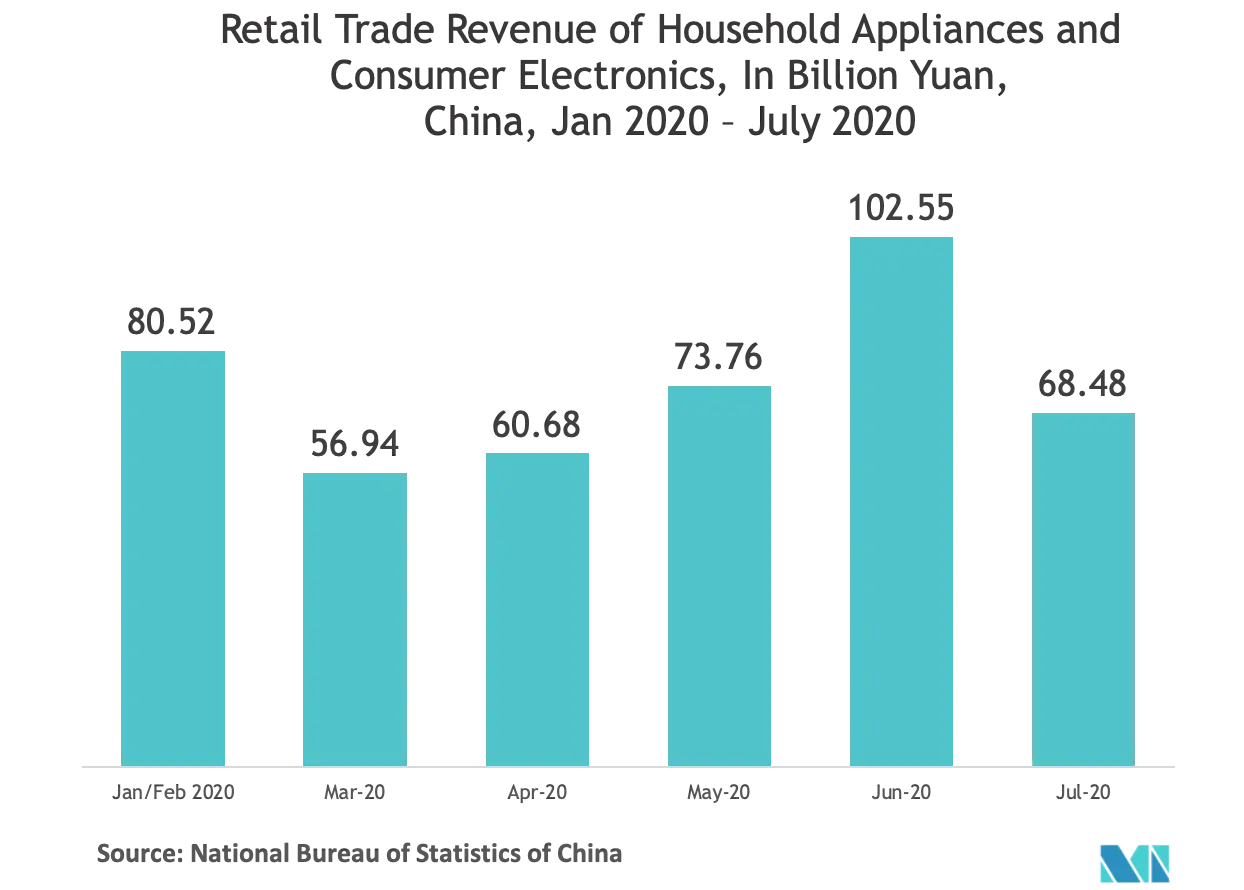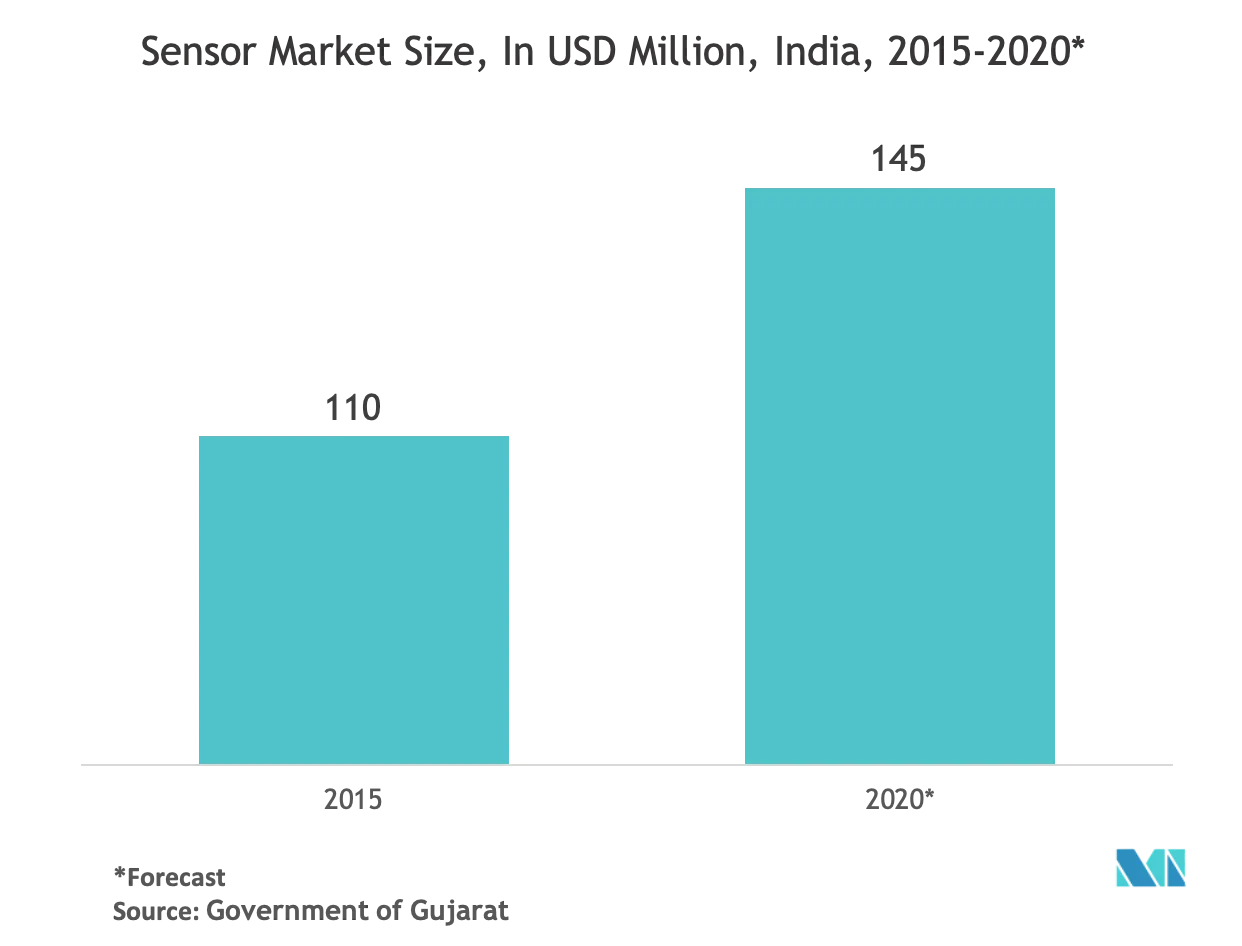Market Trends of Asia Pacific Fingerprint Sensor Industry
This section covers the major market trends shaping the APAC Fingerprint Sensor Market according to our research experts:
Consumer Electronics to Drive the Market Growth
- The increasing demand for convenience, availability, and reachability of embedded biometrics is expected to be another significant factor in driving the adoption of fingerprint sensors in consumer electronics. Further, the incorporation of biometrics with consumer electronics, along with its high cost, is assumed to have a negative impact on growth.
- The in-display fingerprint sensor has also gone mainstream in 2019, where smartphone makers, like Xiaomi, Oppo, Vivo, and Realme, have already launched smartphones with an in-display fingerprint sensor. Moreover, to deploy this in-display sensor, a smartphone needs to have an OLED display, improving the overall smartphone usage experience. It is projected that various Android phone manufacturers, such as One Plus, Vivo, Samsung, Oppo, Xiaomi, especially in the Asia-Pacific region, are planning to stick with fingerprint ID as the primary biometric entry point for the next two years.
- To capture a significant portion of the smartphone market, prominent players are highly focusing on bringing innovations in smartphones. For instance, the Redmi K30 5G smartphone has incorporated Fingerprint Cards AB’s FPC1540 slim side-mounted capacitive touch sensor for biometric authentication. The sensor is placed on the side of Xiaomi’s Redmi K30 smartphone inside the power button, which is also suitable for the latest smartphone designs, including borderless and foldable phones.
- Apart from a smartphone, fingerprint biometrics is gaining traction, among other devices, such as tablets and laptops. Various laptop models from Asus, such as Asus ZenBook, incorporate the conventional fingerprint scanner and the IR Face recognition system. It may be because Windows Helio works seamlessly with both security methods. With the growing trend of differentiating products, many of the laptop providers are incorporating fingerprint sensors. For instance, in January 2020, Samsung has launched its premium Galaxy Chromebook at CES. It features Fingerprints’ FPC1145 sensor for a convenient extra layer of corporate and ends user security.

India Occupies Significant Market Share
- India is experiencing a continuous investment toward manufacturing expansion for the consumer electronics market. The Union Cabinet of India passed the National Policy on Electronics (NPE), which aims to create an electronics manufacturing industry in the country to reach USD 400 billion by 2025.
- In January 2020, Samsung announced to invest over USD 500 million to expand its smartphone displays in the country over the span of three years. Transsion India, a Chinese parent company, Transsion Holdings, manufacturers smartphone for brands, including Tecno, Itel, and Infinix. In February 2020, the company announced expanding the country's production to double from the current capacity. With the trend toward in-screen fingerprint sensors, these companies are expected to create more demand for the country's studied market.
- The State Bank of India planned to adopt a multi-mode biometric authentication for its mobile applications. It will comprise either fingerprint or face recognition or by using voice recognition software. The bank is also planning to use biometrics for various mobile banking products, including Unified Payment Interface transactions. With other banks to follow suit, it is expected to bolster the market's demand studied in the region.
- The Government of India is also investing extensively in adopting fingerprint sensor technology. Recently, in January 2020, for the government's Adhaar program, the official partnered with NEXT Biometrics for acquiring fingerprint sensor technology worth USD 750,000. The company mentioned providing its patented NEXT Active Thermal principle-based fingerprint sensor in both rigid and flexible formats for this project. Such government initiatives are expected to continue over the forecast period, which is estimated to drive India's studied market.


